Animal Phyla: Bilateria/Protostomes/Lophotrochozoa/mollusca
1/12
There's no tags or description
Looks like no tags are added yet.
Name | Mastery | Learn | Test | Matching | Spaced |
|---|
No study sessions yet.
13 Terms
Which of the following conditions is not seen in Mollusca?
a. spiral cleavage
b. coelom formed by splitting of bands of the mesoderm
c. anus derived from blastopore
d. mesoderm arising near the lip of the blastopore
e. triploblasty
c.
mollusca traits
bilateral symmetry (secondarily asymmetrical), complete gut that is regionally specialized, coelomate protostomes, reduced coelem, open circulatory system
open circulatory system (hemocoel)
with heart (usually 3-chambered)—and associated vessels
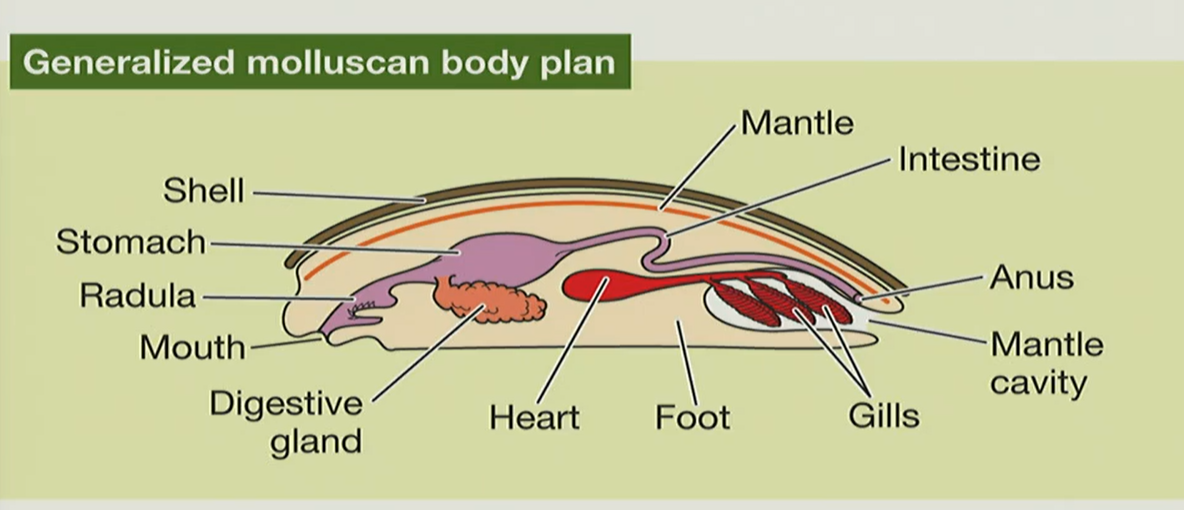
mollusk body plan
mantle, visceral mass, foot, mouth with radula (rasping tongue-like structure), well developed nervous system (especially in cephalapods), excretory system in form of nephridia
mantle
dorsal body wall that covers the visceral mass and encloses the mantle cavity (containing gills)
the shell is secreted by the mantle
chitons
subgroup of gastropods
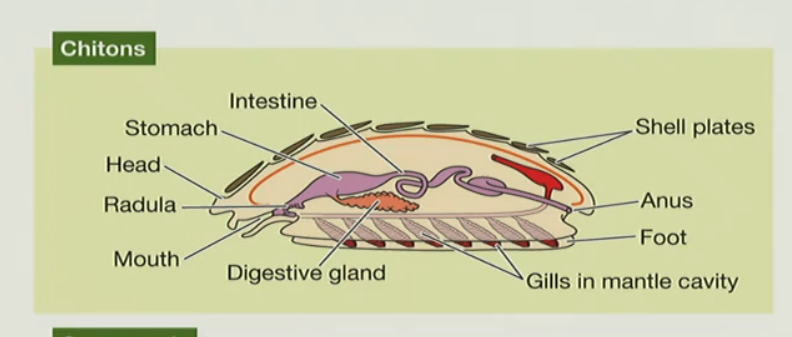
how does the chitin’s body plan differ from the generalized mollusk body plan? (i.e what are the modifications)
The shell is a series of plates. There is a series of repeated gills in the mantle cavity. There is a heightened degree of segmentation in chitins.
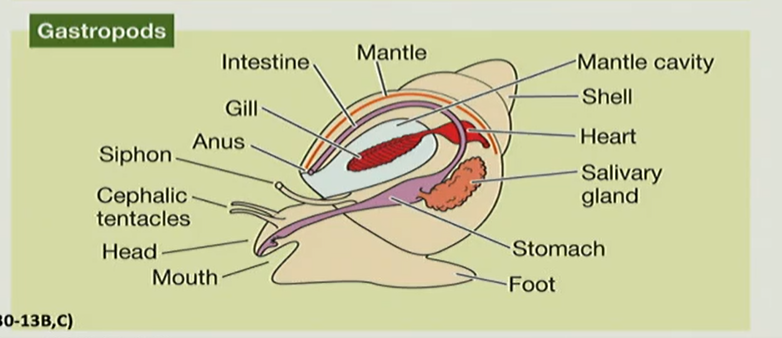
how does the gastropod’s body plan differ from the generalized mollusk body plan? (i.e what are the modifications)
Presence of torsion (the twisting of the visceral mass so that the anus now sits above the organism’s head).
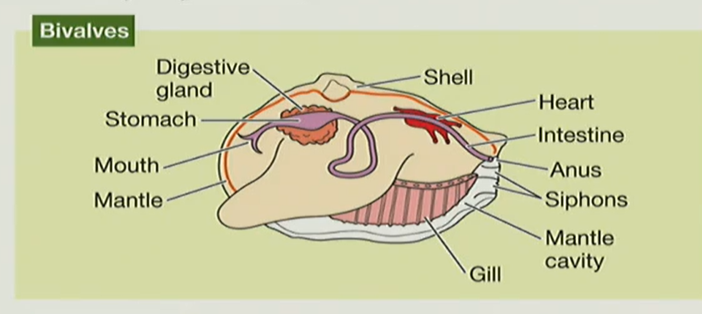
how does the bivalve’s body plan differ from the generalized mollusk body plan? (i.e what are the modifications)
Burrowing foot
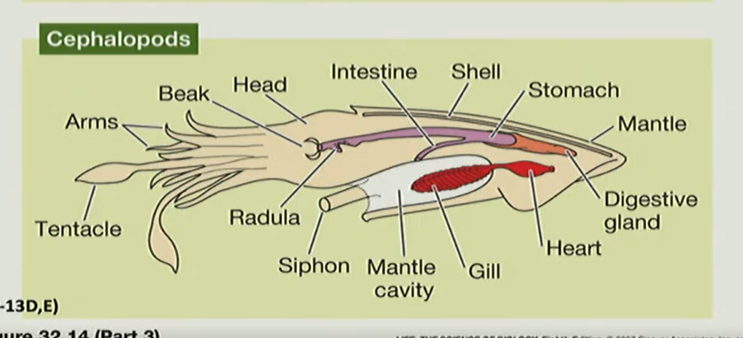
how does the cephalopod’s body plan differ from the generalized mollusk body plan? (i.e what are the modifications)
foot modified into arms, tentacles, and siphon for movement and feeding.
Why are so many species of mollusks known?
They fossilize well.
reproduction in mollusks
mostly dioecious but some monoecious
fertilization mostly external chitons in bivalves, internal in gastropods and cephalopods
siphons are a modification of the mantle
true